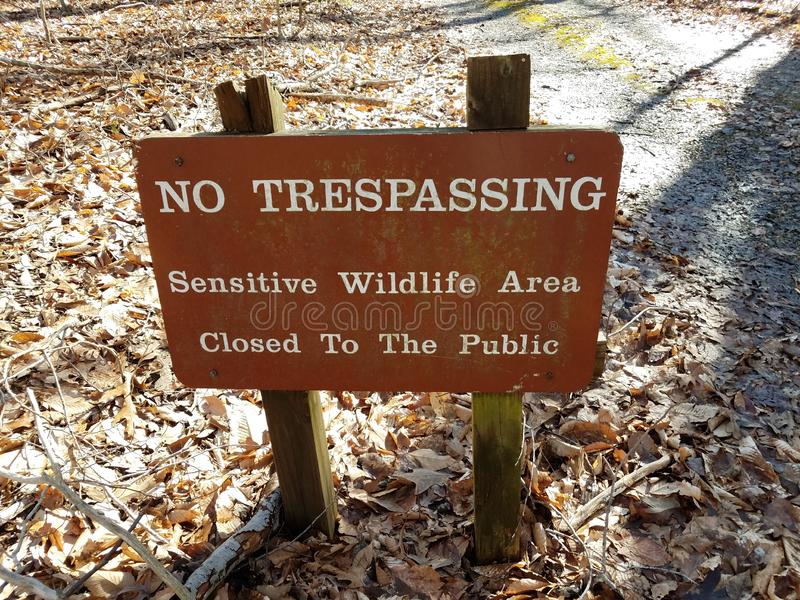Trespassers is knowingly enter private property, either for recreation or for criminal purposes. Forest trespass includes the entrance into any reserves without the permission of the specified authorities. Trespassing into protected areas is a major concern. Although this may seem a small issue at a first glance but this gives rise to major issues. This includes poaching, exploiting of the forest and accidental habitat degradation. It is no surprise that this is one of the main threats to wildlife.

Trespassing leads to the Exploitation of Resources
Trespassing hunters are often caught by the forest departments. While human wildlife conflicts have received worldwide attention, the dependency of rural communities on the extraction of natural resources has gone unnoticed. Resource extraction for fuel wood, fodder and grazing is one of the main threats to protected area worldwide. However, in developing countries, forest products are extensively used by rural communities, even inside protected areas, and play crucial roles in their livelihoods.
Stricter Law Enforcement Required
The ecological consequences of the exploitation of forest resources have highlighted the need for stricter law enforcement. These illegal use of resources has contributed to economic insecurity for many rural communities. This has had a negative impact on the local and native biodiversity of an area. No detailed study has been done on estimating the level of trespassing done within the protected areas.
Although, this remains significant low, where majority of such crimes are highly organized and well planned. An assessment on Sabah forest coverage in 2008 found that around 3,300 hectares of the mangroves forest reserves were trespassed or illegally exploited.
Migration management is a complex and challenging responsibility. Combined with geopolitical and cultural factors it is very difficult for authorities to control the inflow illegal immigrants into Protected Areas.
Forest Trespassing leads to Human Wildlife Conflict
Trespassing can be life threatening to both humans and wildlife. In fact, trespassing can cause significant human wildlife conflict. Trespassing by locals around protected areas is a common phenomenon. This is despite the known dangers present in the forest. However, there are more chances of fatalities to non local tresspasers, including tourists, who are unfamiliar with the forest.
Habitat Degradation is a product of Forest Trespassing
High levels of movement activity within the restricted areas can degrade the pristine natural habitat . The disturbance of native floral and faunal communities can result in alteration of the complex ecosystem cycles. The uniqueness of an area is directly proportional to the level of disturbance. People have high levels of curiosity to explore the hidden ventures and discover the unknown. However, while doing this, people unintentionally are causing a negative stress upon the biotic and abiotic components of the habitat which will ultimately lead to the degradation of the uniqueness of the habitat.
Trespassers do cut down wire fences and move into the prohibited zones. This has an effect on the well-being of animals of that area. It has been determined in various studies that the wildlife in and around areas with high human movement tend to show higher stress levels which has an impact on the normal behavior of wildlife such as in mating success, feeding habits, daily activity patterns. Often high anthropogenic pressure results in shifting of species home range and reduction of time spent foraging which reduces the amount of nutrition requirements gained per forage.
Ecotourism
Photography and Bird watching being the most trending hobby globally, Although this is a non-consumptive value of wildlife but Bird watchers in the need of a perfect and best shot of their favorite species often move into the core zones without considering the ethics of Wildlife photography near the species territory which makes the species to move further inwards into denser areas and ultimately making it difficult to be sighted in future.
Eco-tourism often brings the influx of large number of people from diverse Socio-cultural and literacy backgrounds into any area. With different beliefs people are individually responsible for impacting the ecosystem at a micro level as well as on macro level. Camping in the forested patches and burning fire-woods by groups, although at small scales can combine to produce a larger effect over a longer timescale. In fact, this has contributed to India’s rampant forest fires. Similarly, littering has become a nuisance in wildlife paradises, such as the mountains of Ladakh. It is for this reason wildlife tourism was banned in India in 2010.
However, the ban was removed and wildlife tourism has been flourishing. This has brought significant revenue for local communities and conservation. In fact, conservationists hope that India can replicate the wildlife tourism model of Africa to bolster conservation. Furthermore, it is crucial to ensure eco-tourism remain ethical. This includes the use of trophy hunting for conservation. However, it is crucial to minimize the impacts of tourism on wildlife. The Practices of Temple Elephants and Dancing Bears are cruel tourism practices which have received much scrutiny. Other forms of unethical wildlife tourism include snake charming and civet coffee. Other than ecological damage, these foster the illegal wildlife trade.
Conclusion
Although nature has the ability to rebounce and recover from the damages caused, but the heavy levels of disturbance at an unstable rate is leading to the deteoriation of the recovery rate of nature. Enthusiasts and explorers should follow proper ethics while moving in a natural habitat and think about the effect of their presence on the biota and what imprint they are going to leave behind in the area. To ensure conservation is a success, we must support rural communities to make a sustainable livelihood from conserving wildlife. An example of how supporting livelihoods has supported conservation are the hunted birds of North East India.
.
Written by: Shreya Pandey, Amity Institute of Forestry and Wildlife, Amity University, Noida, Uttar Pradesh – 201301, India shreyapandey.2244@gmail.com
